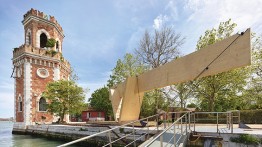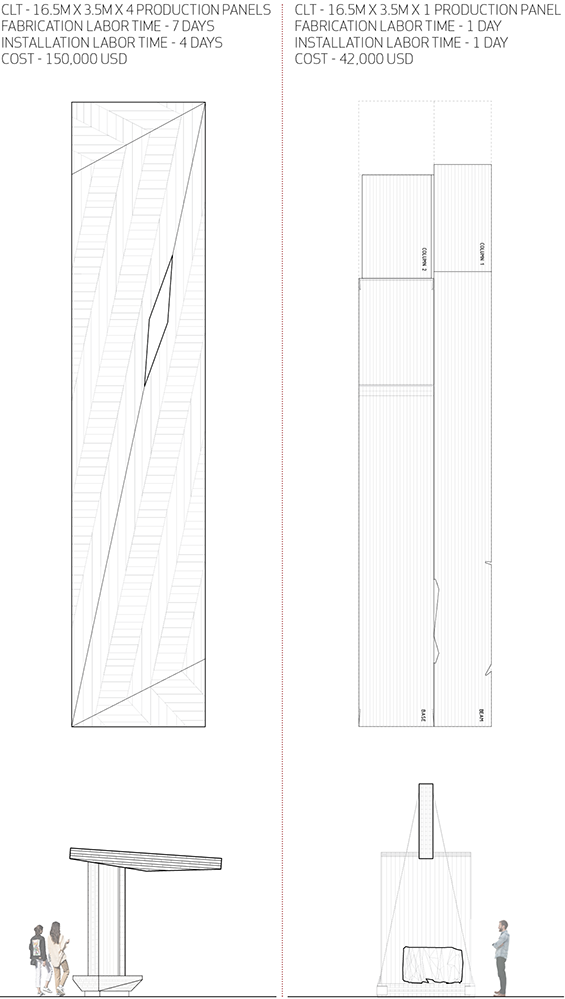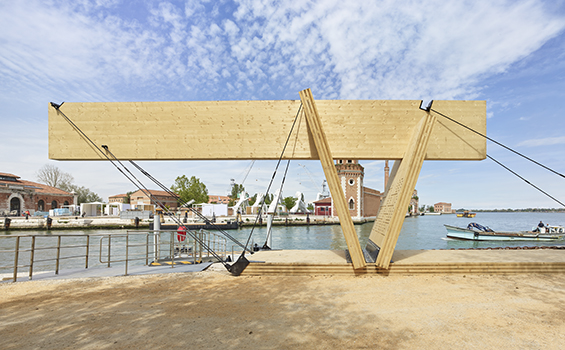2021 Venice Biennale: NADAAA’s Veneta Porta Lignea
POSTED ON: August 19, 2021

Photo by Roland Halbe
As part of an ongoing series of posts highlighting faculty and alumni projects featured in and associated with the Venice Biennale’s current 17th International Architecture Exhibition, the School of Architecture is pleased to feature the Veneta Porta Lignea, one of two projects by NADAAA in the Biennale.
Located adjacent to the Giardino delle Vergini, the installation occupies a critical location in Venice as both a destination at the end of the Arsenale, and its gateway as one arrives by boat. Historically, this vaporetto stop has been seen as a back door. However, with the Arsenale serving as an important open space during COVID, more outdoor installations have been conceived as part of this year’s exhibitions, warranting a gateway that acknowledges the site as a new front door.
NADAAA strategically conceived the project’s assembly and disassembly, focusing on proposals that could be erected in less than two days without having a substantial impact on the context, its fondamenta, and gardens. With an eye towards optimization, NADAAA adopted a panel of cross-laminated timber (CLT) as a single member into which it could carve and stencil without wasting material or labor.
The office’s first approach adopted a mass-customized strategy to optimize a cantilevered structure, giving depth to the core span while milling out material at its cantilevered edges and drawing out the herringbone pattern of the CLT to the surface. Surprisingly, this approach also increased the use of material and labor.

NADAAA’s second approach addressed the predicament of labor and materials with the idea of building the entire installation out of one CLT slab. This relegated the exposure of the CLT end-grain to the edges of the slab, where the silhouette of the CLT plank is excavated with divots affording nested joints for compressive and tensile members. The resulting design articulates a base, a shaft, and a lintel which both frames the threshold into the Giardino and recalls the symbol of Venice—the winged lion of St. Mark which holds the city’s welcoming words in an open book to the waters: Pax Tibi Marce Evangelista Meus (Peace unto you, Mark, my Evangelist).


The base serves as a wood foundation, liberating it from penetrating the Venetian soil. The “piloti” is triangulated, a figural “V,” and an allusive registration of the open book containing Venice’s welcoming words—all while framing a view of the fortification tower beyond the lagoon. The lintel is displaced asymmetrically, cantilevering over the arrival passage and pushing the installation’s structural capacity to its limits; a Venetian stone maintains its balance on the opposing end. Set on the stones of the fondamenta, this wood construction also alludes to the wood piles that hold up this maritime city.

NADAAA also wished to develop a structure that would help to bring people together, frame the space at the Giardino, serve as an edge for the garden, frame the serene view north towards the lagoon, and provide a foreground for other Biennale installations.
The 17th Venice Architecture Biennale How Will We Live Together? is curated by Hashim Sarkis.
Project Team:
Principals: Nader Tehrani, Arthur Chang
Project Coordinator: Alexandru Vilcu
Project Team: Eric Cheung
In Collaboration With:
Canducci Group, Structural Engineer Consultant
Andrea Canducci, Alessandro Canducci, Alessandra Feduzi, Giulia Leopardi, Antonio Eroi
Donors/Sponsors:
Means Method Mission
Canducci Group
Elise Jaffe + Jeffrey Brown
Payanini SRL




